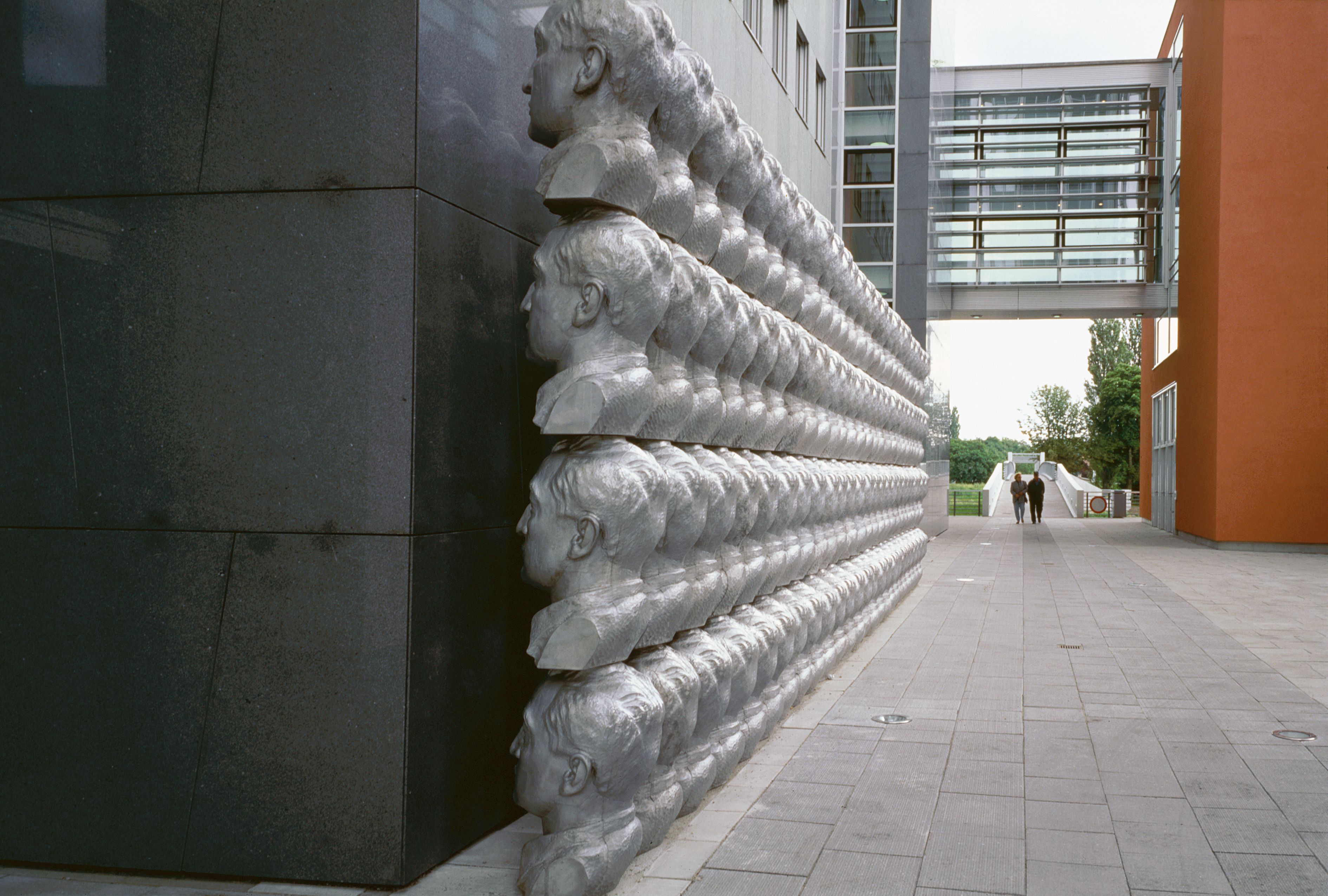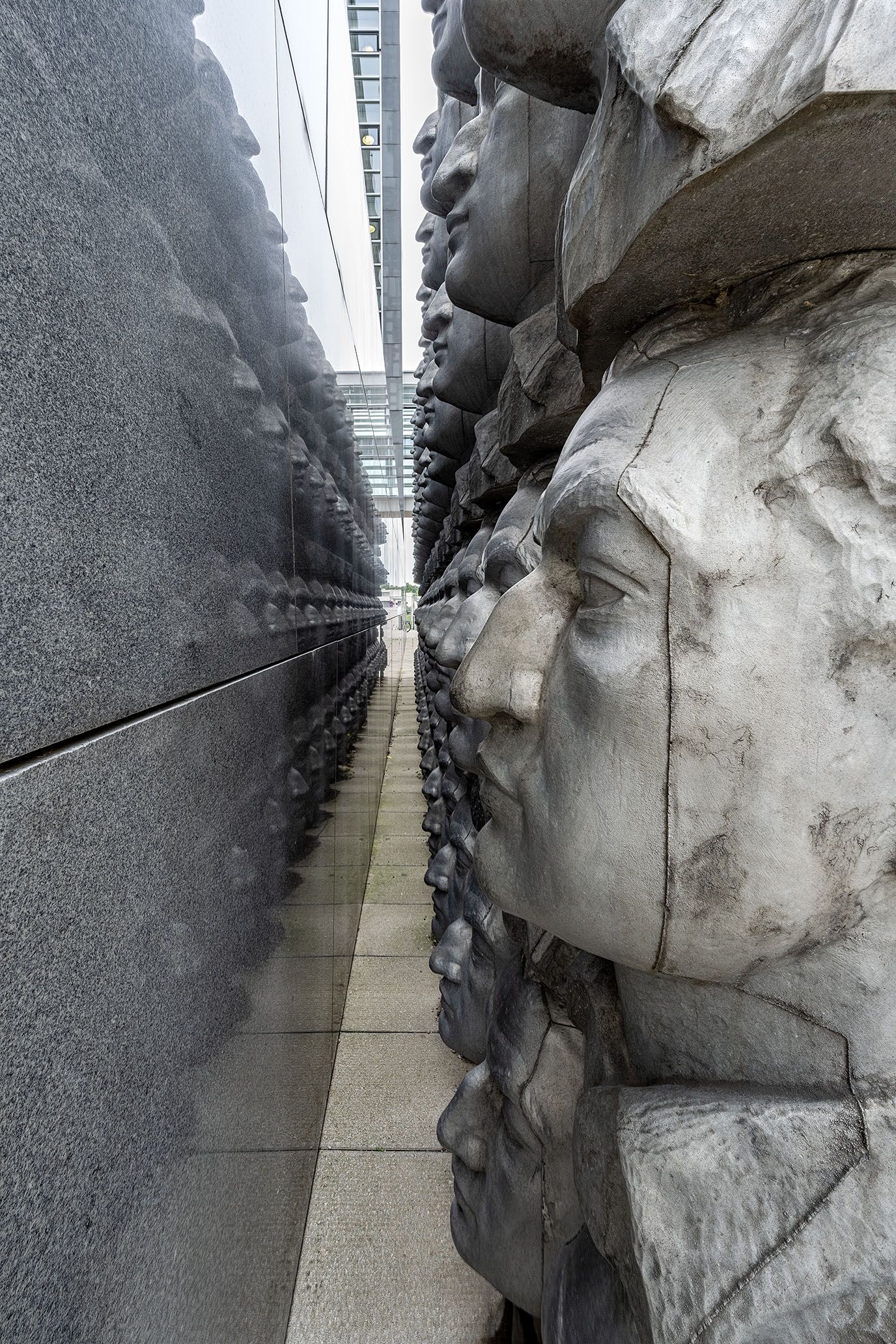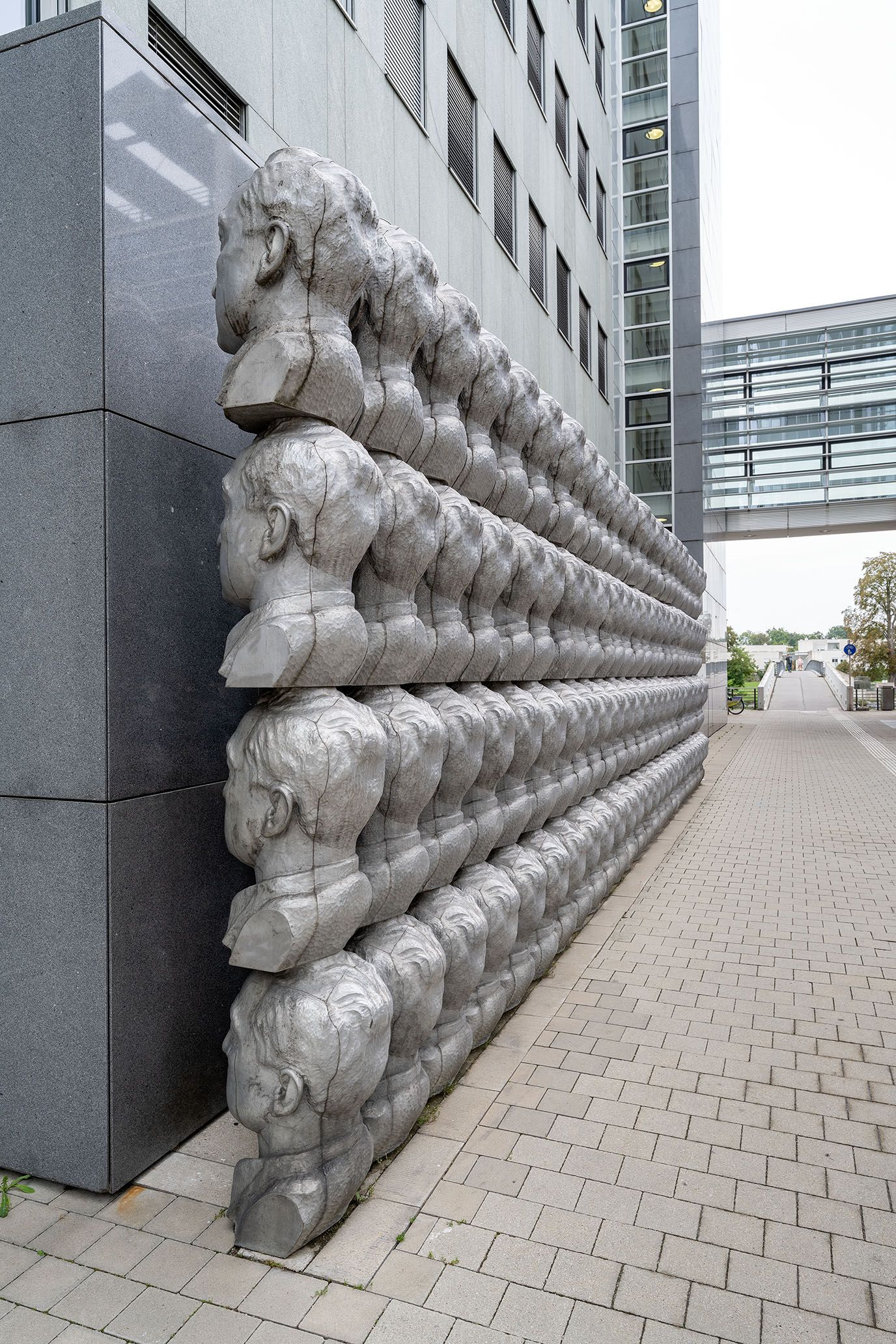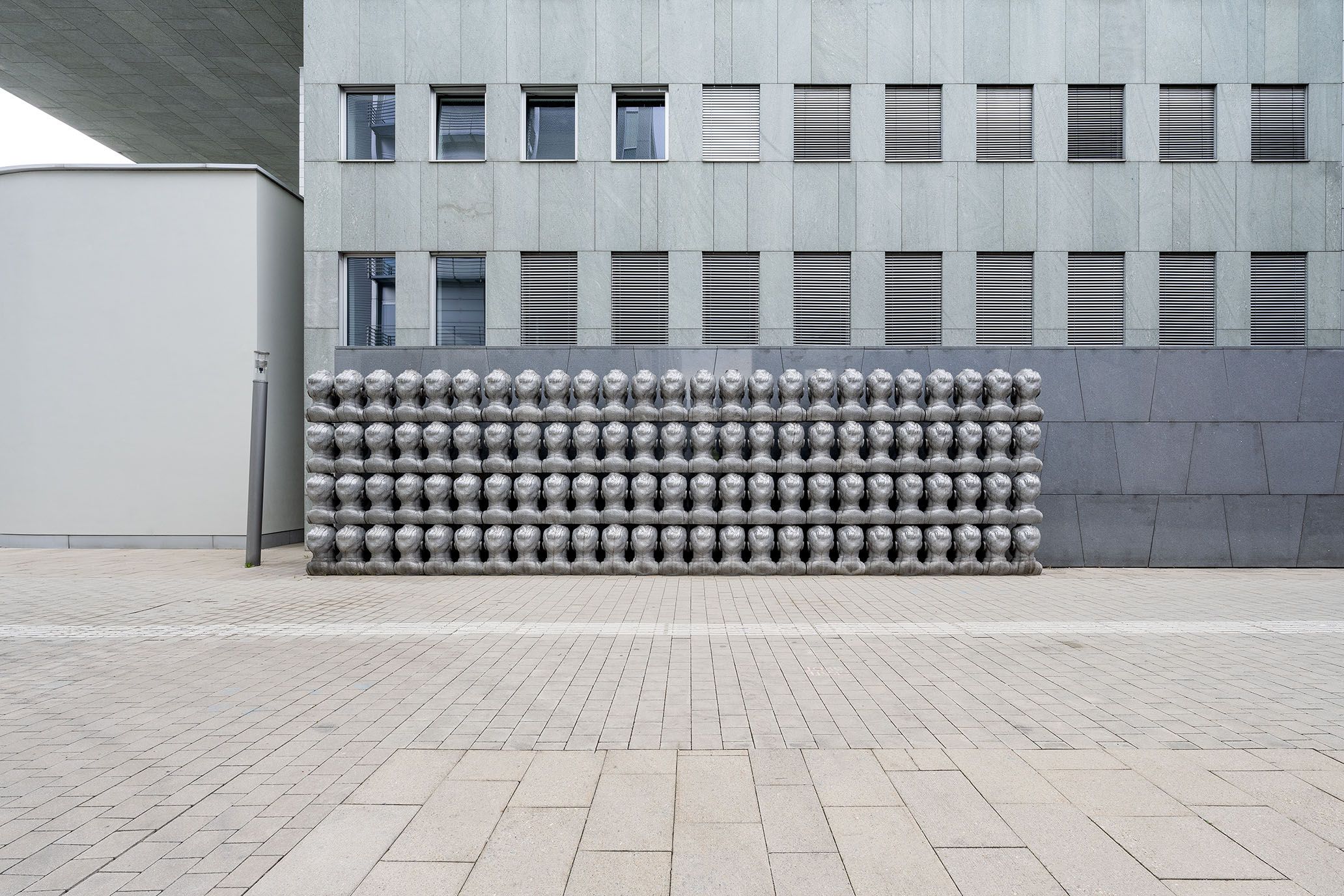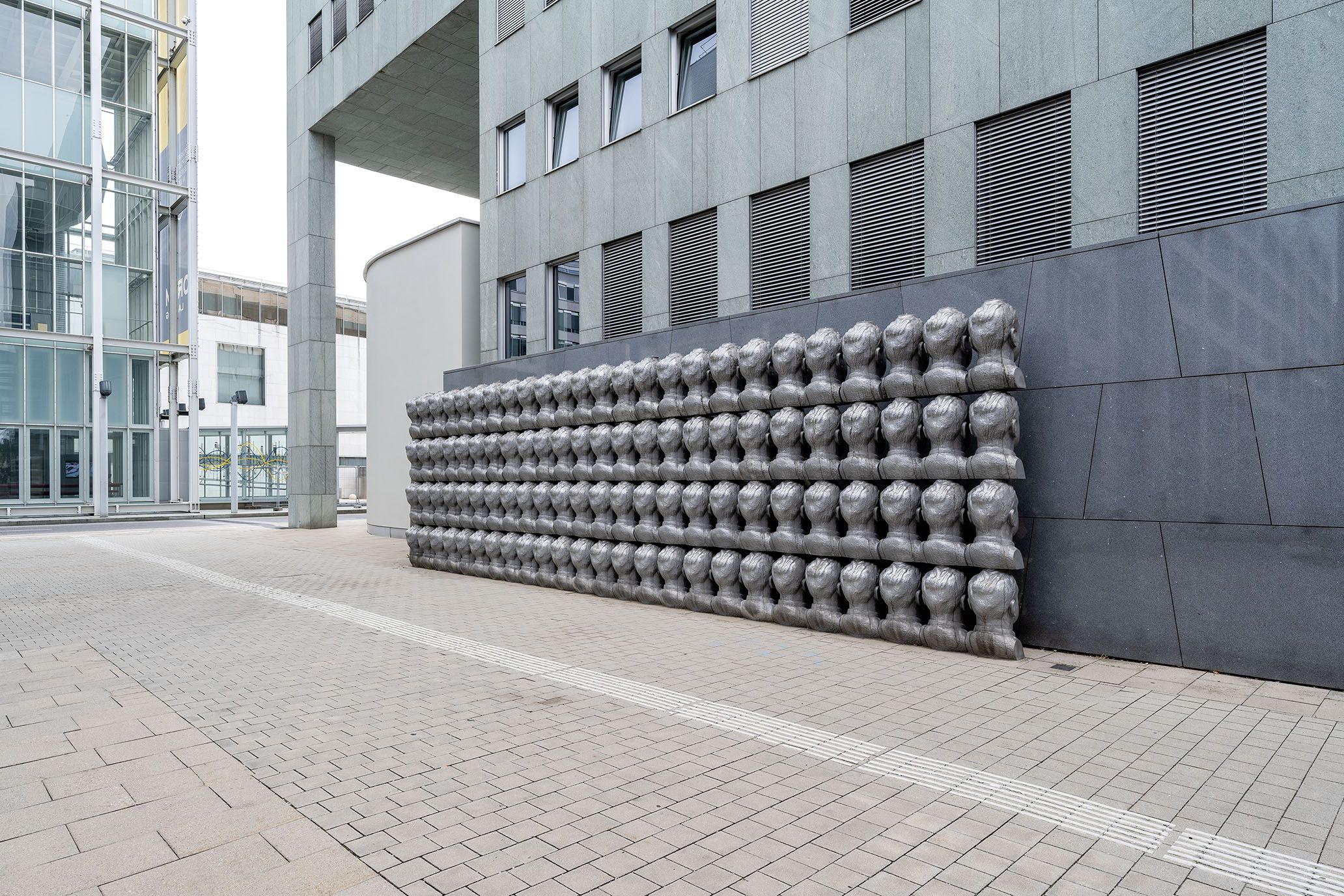Hans Kupelwieser
:
Hohlkopfwand
Back
Information
The two-stage competition provided the background to the artistic intervention in St. Pölten, for which seven artworks by Austrian artists were recommended for realisation. These projects are by Josef Danner, Bruno Gironcoli, Richard Hoeck, Hans Kupelwieser, Christoph Steffner, Thomas Stimm and Heimo Zobernig. Five commissions for interiors were awarded directly, to Gunter Damisch, Franz Graf, Brigitte Kowanz, Eva Schlegel and Walter Vopava. The winning project in a separate competition for the design of the chapel (1995) is by Arnulf Rainer. Additional existing artworks by Franz Xaver Ölzant, Oskar Putz and Ruth Schnell are also to be found in the Regierungsviertel. Works by Dara Birnbaum and Michelangelo Pistoletto, also selected by the first jury, are not realized.
Hans Kupelwieser's "Hohlkopfwand" reflects a different position towards monuments, the great sculptural success. Like his other works for Krems and St. Pölten he focuses specifically on the site. Whereas it is possible to use and walk on his commissioned projects for the Hammerpark or for the Jewish Cemetery in Krems, his work here confronts one with radical denial. The heads placed next to, and above, each other deny any gestures given their serial manufacture. They stare at the wall without the vis-à-vis of a possible onlooker. The sculptor's statement is also one of an industrial serial product - an impression reinforced by the way they have been stacked one on top of the other and their negated visual orientation. Decisive is not an individual but rather a generic model for the head, where anonymitiy sneaks in which, in turn, interprets and designates the place. "Hohlkopfwand" (hollow head wall) as a mataphor for the anonymous activities of government officials? Traditionally the government district claims to be a realm of power be this explicit or not, in any case such an impression is virulent. Hans Kupelwieser's heads subvert this claim from the outset, they deny tradition the gaze and the space. Reflected on the wall these heads reflect the architecture with which they are closely linked through their arrangement, becoming an integral part of it.
Images (6)
